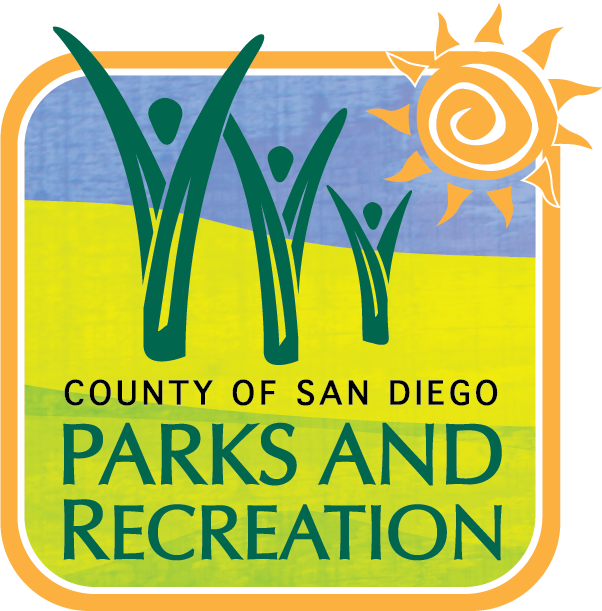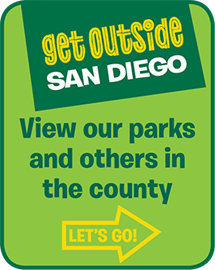Are you in the minority? If not, we encourage you to learn from some
members of our team who have faced fires head on, and have taken steps
to safeguard themselves, their families, their pets and their properties.
Cheryl’s Story
“During the 2003 Cedar Fire, we were able to stay home because
Cal-Fire crews set up a staging area nearby,” said Cheryl Wegner,
Volunteer Coordinator. “We felt secure, but we were surrounded by
smoke in every direction but due west.”
That changed with the 2007 Witch Fire, which burned 247,800 acres
over 17 days.
“In a very short span of time we had to evacuate with our two
horses, a dog, a cat and cockatiels. We loaded up in our truck, our
cab-over camper and horse trailer and left,” she said.
They found a horse boarding facility in Vista and stayed there for a
week. When they were allowed to return home, it was still standing
while homes up the hill had burned to the ground.
“It’s important to keep things handy for emergencies,” she said,
adding, “that’s especially true for your animals in the event you’re
not home and someone else has to save them from oncoming disaster.”
For horses, she recommends keeping their halter and lead rope
hanging near their corral, and their trough full of water. She also
suggests practicing loading them in and out of a trailer.
Easy-to-get-to crates are key for dogs, cats and birds. For all
animals, food and medicine should be kept nearby.
“Both my horse and dog are microchipped, so if my animals are
evacuated by someone else, I have a way to prove ownership,” she said.
Her personal go-kit contains clothes, shoes, toiletries, water and
County Parks’ Evacuation and Continuity of Operations Plans.
Doug’s Story
Doug Andrews, a ranger stationed in County Parks’ mountain district
and retired fire battalion chief with 25 years of firefighting
experience, is an expert in education and preparation.
“People have no idea how fast fires can move – especially in the
Julian area,” said Doug. “If you are told to evacuate, do it
immediately. If it’s an optional evacuation, weigh that decision
heavily; don’t waste time getting yourself and your family to a safe place.”
Doug’s family has had to pack up and evacuate many times. In fact,
during one incredibly dry and windy 7-year spell, they survived five evacuations!
“It’s sad to see people lose everything that is important to them.
Our ‘go boxes’ are up-to-date and by the door, for the next fire
emergency,” he said.
In his go-kit are important papers, photo albums, other
irreplaceable items and extra clothes. His house has never been
burned, though that could be a testament to his prevention techniques.
Doug regularly cuts the grass and trims and removes dying trees. He
also cuts branches below 8 to 10 feet on healthy trees to prevent
flames from catching and burning their crown. He’s even done the same
for his neighbors and has encouraged all of them to purchase fire gel kits.
“They’re worth the investment. I’ve seen several homes coated with
four of these 1-gallon jugs, and they survived while properties were
completely scorched. We’ve had them on our land since the Witch Fire,
he said.”
George’s Story
Supervising Park Ranger George Morris at Potrero County Park played
an integral role during the recent Border Fire which scorched 7,609
acres in the border community of Potrero. Some 1,500 people with
vehicles, tents and trailers flooded the park – transitioning a large,
sleepy campground into a hub of emergency activity.
“It looked like a FEMA Convention,” said George. “They held
briefings every morning, and I shared those details with my team.
Communication was difficult because there were long spans of time when
we could not use computers or cell phones – all we had were radios,
and the ability to drive to nearby Lake Morena County Park.”
Potrero may have been the most protected space in the area thanks to
the sheer number of firefighters on site, but staff take their own
precautions year-round by cutting down vegetation along the perimeter
to create defensible space.
“When we got the call that the fire crews were coming in, we spoke
to each of our campers and provided them with a safe exit route, along
with contact info for the nearest shelter. Sometimes we share
alternative routes – you never know when a fire will move too quickly
or change directions.”
George’s go-kit is all buttoned up in several Tupperware containers.
Inside are water, clothes, a first aid kit, credit card information,
important papers, a flashlight and a portable ratio.
“You’re in a frenzy; you don’t always have time to grab the things
you need, and you may not even remember,” he said. “You have to be
ready to go within minutes, with the minimum number of things you need
to survive several days.”
County Parks’ Everyday Story
We’re on call 24-7 to support the County in any disaster. Employees
are trained to identify and track potential issues – communicating
vital details up and out to protect residents, customers, crews and land.
“We’re first responders. Our roles are different but we’re still on
the front line as part of a cohesive, multi-agency unit dedicated to
protecting San Diegans,” said Jason Hemmens, Director.
He added: “Last year, when OES needed emergency shelter volunteers,
we stepped up to the plate, training nearly 100 people to serve in
supporting and managerial roles. [Similarly] When they need a place to
set up their communications hub and stage vehicles, we provide it.
When they need help getting messages to the public, our team helps
-both in person and through our online channels.”
We also take precautionary measures to clear defensible space while
tracking weather patterns and wildfire risks with other local, state
and federal agencies.
What You Can Do
This is just a quick look at things you can do and that people are
already doing to safeguard themselves, their loved ones and their
homes from natural disasters like wildfire. If you’re inspired to make
your own plan, we encourage you to register your cell phone with Alert San
Diego and to peruse some of the helpful resources compiled by
Ready San Diego,
CAL
FIRE and the County News
Center.






















